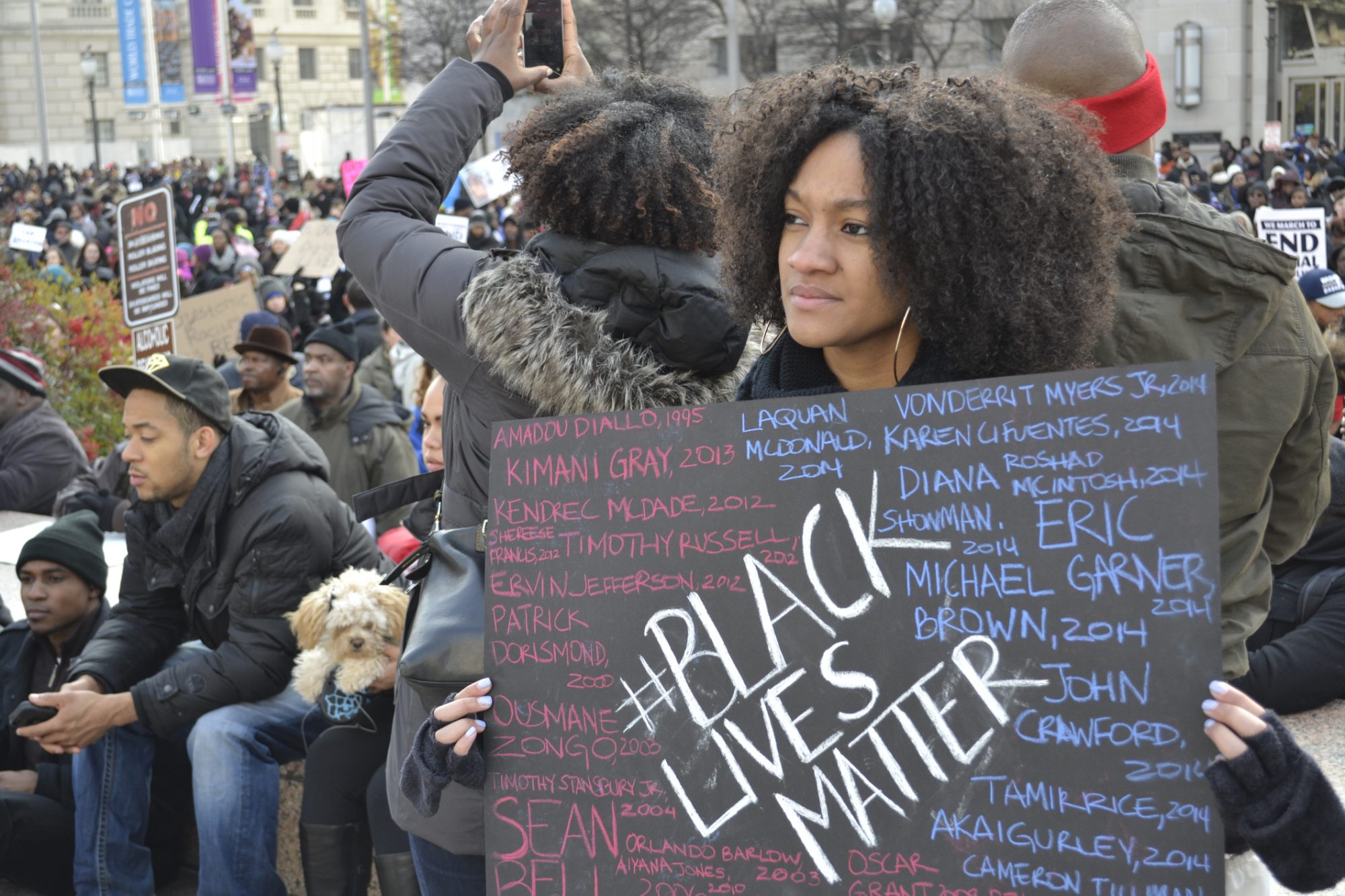How the right to free speech enables the modern protest movements of marginalized groups.
Elizabeth Cady Stanton. Susan B. Anthony. Rosa Parks.
It is hard to get through a K-12 education without hearing these names. Whether fighting for voting rights or civil rights, these women became part of our country’s legacy due to their fight to be heard, and to make change.

It is this effort to agitate for social change that political science professor Courtenay Daum studies, with her research focus on present-day social movements of marginalized groups.
“Historically, it has been through social movement formation and action that oppressed populations are able to gain the socio-cultural support necessary to place demands on existing institutions,” says Daum.
Daum’s research looks at how marginalized groups use agitation instead of, or in addition to, persuasion to gain public attention, to build new movements, and challenge the status quo. While persuasion takes place within sanctioned political venues, like challenging a discriminatory law in the courts, and uses sanctioned methods and language to educate on an issue, strategies of agitation work to challenge and decenter dominant populations and their sanctioned methods and strategies in favor of centering marginalized and oppressed populations.
Whether it’s free speech (verbal or symbolic) or protests (organized or spontaneous) designed to articulate and draw attention to issues of concern, “free speech and association are essential elements of movement building,” says Daum.
For instance, Daum analyzes agitating speech as a form of protest conducted by the Standing Rock Sioux in her recent article, “Counterpublics and Intersectional Radical Resistance: Agitation as Transformation of the Dominant Discourse,” published in 2017 in New Political Science. In it, she examines the Standing Rock Sioux’s mass mobilization in opposition to the Dakota Access Pipeline (DAPL). Prior to the movement, the tribe participated in the government’s environmental assessment about where the pipeline should be built. The Sioux found that their comments were not heard, and in order to be heard, Oceta Sakowin Camp was established. The camp was established near the Standing Rock Sioux reservation as a way to literally recenter the Sioux, their lands, and their voices in the public discourse surrounding the construction of DAPL. From the protestors rallying cry, “Mni Wiconi” (“water is life”), to the fact that the gathering at Oceta Sakowin was the largest gathering of Native tribes since Wounded Knee in 1890, the Standing Rock Sioux Tribe’s opposition to DAPL morphed into a broader political mobilization intended to draw attention to ongoing injustices against Native peoples, their lands, natural resources, and cultural and historical sites.
While the Standing Rock Sioux continued to pursue litigation in the courts to prevent the construction of DAPL, the mobilization at Oceta Sakowin was a response to these traditional venues’ failures to recognize the grievances of not only the Sioux but other Native tribes and communities as well. In these ways, the Standing Rock Sioux sought to persuade the government via sanctioned legal discourse and use tools of agitation including protest, resistance and disruption to draw the public’s attention to the Standing Rock Sioux, their land, and their grievances.
“It is precisely because the Standing Rock Sioux deviated from governing norms that they were able to attract attention to their concerns and gain the support of others from around the U.S.,” says Daum.

Daum also looks at other present day social movements that aim to agitate instead of persuade.
Black Lives Matters formed and gained national attention when Alicia Garza, Patrisse Cullors, and Opal Tometi, three queer Black women, took to social media after the acquittal of George Zimmerman for Trayvon Martin’s death in July 2013. Garza’s message on Facebook: “Black people. I love you. I love us. Our lives matter, Black Lives Matter,” was shared by Cullors with the hashtag #BlackLivesMatter.
This small statement is revolutionary because Black Lives Matter activists are centering Black individuals and their experiences in the discourse. “Black Lives Matter activists are making a political statement that is powerful in part because they are arguing that Black lives, not all lives, Black lives matter,” said Daum.
For years, many NFL players have worked to combat social injustices in majority-minority communities and bring attention to discrimination against people of color through community activism and the formation of foundations. But it was not until Colin Kaepernick sat, and then took a knee, during the National Anthem that the public began to take notice and pay attention to his message about police harassment and violence against people of color. It was when Kaepernick’s, and later, other NFL players’, protest disrupted the traditional pre-NFL game atmosphere that it attracted the public’s attention.
“One of the reasons that speech is so powerful is because it enables individuals to cultivate their own voices in order to speak their own truth to power,” says Daum.
Daum’s next step in studying social movements such as these is to research what happens after these groups have received the public’s attention. How do they keep the momentum going? Daum says it is hard for direct change to come from these movements but they do create discussions that have the potential to lead to change. Although the Standing Rock Sioux failed to stop the pipeline, many powerful messages formed from the protests, including “consent not consultation.”
“While I recognize that the Standing Rock Sioux and the various other tribes and groups that mobilized at Standing Rock were unable to stop the pipeline, the articulation of “Mni Wiconi” and “consent not consultation” are sources of discursive power that reframed the broader public discussion in powerful ways, and may yet challenge traditional institutional arrangements moving forward,” says Daum.
Daum also mentions that although there have not been any major institutional changes from Kaepernick taking a knee, the movement has gained more national attention than all of the other players’ local activism efforts combined, including attention from President Donald Trump mentioning Kaepernick at a rally in Alabama and calling for him to be fired.
While the result of this public attention remains to be seen, history proves that agitation can lead to meaningful progress. Today, it might feel like women’s suffrage was granted in a natural, orderly way. However, the suffragists engaged in agitating and disrupting activities, such as picketing the White House and insulting the president during wartime, undergoing arrest, and suffering through hunger strikes, all as part of a decades-long fight.
The right to free speech has always enabled and protected the agitating and disrupting activities of these movements. “If we allow subjective judgment to be the basis for censoring speech, then we initiate a slippery slope in which all speech is subject to prohibition,” says Daum. “Ultimately, it is up to us as individuals to decide which speakers we will opt to hear speak, and who we will sit out.”
As American historian Laurel Thatcher Ulrich says, “Well-behaved women rarely make history.”
